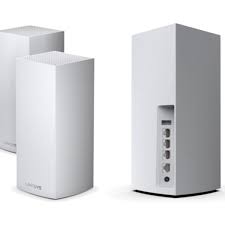When it comes to setting up a home network, the Linksys Velop system is lauded for its performance, reliability, and ease of use. As one of the leading mesh Wi-Fi systems on the market, it promises comprehensive coverage across a range of environments. However, even the most reliable systems can encounter issues, and a common problem some users may face with their Linksys Velop system is a weak signal. In this post, we’ll explore the causes of Linksys Velop Weak Signal strength in the Velop system and provide practical solutions to enhance your Wi-Fi experience.
Understanding the Basics of Linksys Velop
Before diving into troubleshooting, it’s essential to understand what the Linksys Velop is and how it works. The Velop is a high-performance mesh networking system designed to deliver seamless Wi-Fi coverage throughout your home. Each node in the system functions as a router, working together to blanket your home in a strong, consistent Wi-Fi signal.
Common Causes of Linksys Velop Weak Signal
A weak signal in your Linksys Velop system can be attributed to various factors including:
-
Physical Obstructions: Walls, furniture, and appliances can block or interfere with Wi-Fi signals.
-
Distance Between Nodes: Placing the Velop nodes too far apart can weaken the signal as it travels from one node to another.
-
Radio Interference: Other electronic devices like microwaves, Bluetooth speakers, and baby monitors can interfere with Wi-Fi signals.
-
Overlapping Wi-Fi Networks: Neighboring Wi-Fi networks on the same channel can cause interference and degrade your network performance.
Step-by-Step Solutions to Improve Signal Strength
1. Optimal Placement of Nodes
The placement of your Velop nodes is crucial for maximising signal strength and coverage. Here are a few tips:
-
Place the primary node in a central location within your home.
-
Avoid physical obstructions by placing nodes at a certain height, preferably on a shelf or table.
-
Maintain a reasonable distance between nodes – typically not more than two rooms apart.
-
Use the Linksys app’s signal test feature to check if the placement of the nodes is optimal.
2. Reduce Interference
Reducing interference from other electronic devices and neighbouring Wi-Fi networks can significantly improve your signal quality:
-
Change your Wi-Fi channel through the Linksys app to avoid congestion. Use channels 1, 6, or 11 for 2.4 GHz networks as these channels do not overlap.
-
Keep your Velop nodes away from large metal objects and appliances that emit electromagnetic waves.
3. Update your Linksys Velop Firmware
Linksys frequently releases firmware updates to improve system performance and add new features. Ensuring your Velop system is up to date can resolve many issues including weak signals:
-
Use the Linksys app to check and update your Velop system to the latest firmware version.
4. Expand Your System
If your home is large and has many physical barriers, consider adding more nodes to your network:
-
Additional nodes can help to extend the coverage and strengthen the Wi-Fi signal throughout your home.
-
Ensure that any additional nodes are correctly synchronised with your existing system through the Linksys app.
5. Network Optimization Tools
Utilise network optimization tools available in the Linksys app:
-
The app can automatically select the best channel and band for your devices.
-
Use the Wi-Fi analyzer tools available online to understand how your network is performing and how it might be improved.
When All Else Fails
If you’ve tried all the above steps and still experience weak signals, it might be time to contact Linksys support for further assistance. There could be a hardware issue with one of your nodes, or perhaps a more complex network issue that needs professional attention.
Conclusion
The Linksys Velop is a powerful tool for creating a robust home Wi-Fi network, but like any system, it can encounter issues such as weak signals. By following the steps outlined above from optimising node placement to reducing interference and regularly updating firmware you can usually overcome these challenges and enjoy a seamless and reliable Wi-Fi experience in your home.
Remember, the key to maintaining a strong and stable Wi-Fi network lies in understanding how different factors interact within your specific environment and taking proactive steps to mitigate potential problems. With some tweaking and troubleshooting, your Velop system will be back to providing the strong and expansive coverage it’s known for.
Read More:- Linksys Velop Troubleshooting
